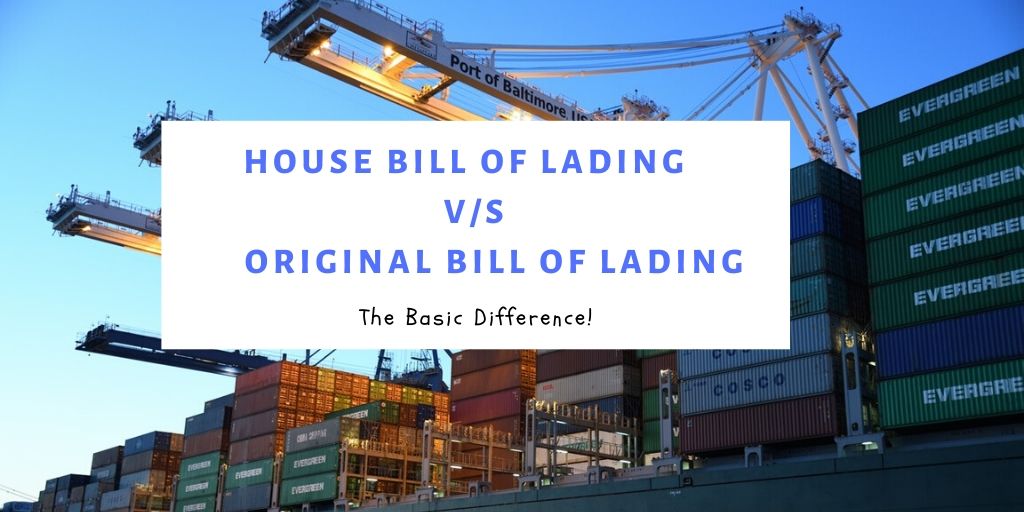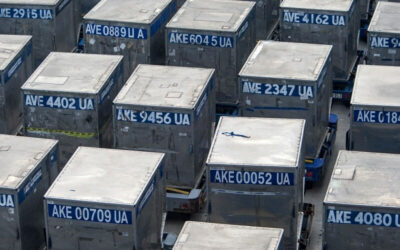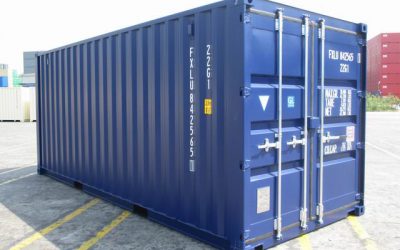HBL (House Bill of Lading) VS OBL (Original Bill of Lading)
If you are dealing in the Ocean Freight Forwarding Industry and confused about the Bill of lading then you have come to the right place to understand it. There is no denying the fact that BL is the most difficult and confusing document while dealing with the Ocean freight forwarding industry. The complication usually arises when we find different bills of lading. Mostly two bills of lading are prepared one by the 3PL and the second one by the shipping company. If simply put, the Bill of Lading is basically the contract of carriage. It has details of cargo, the destination point and the parties involved. It describes the transfer of the shipment from the seller to the buyer, the time of purchase, identification of liability and the boundaries and limits of the ownership.
| HBL | OBL |
| The document of HBL is prepared either by an Ocean Trade Intermediary OTI or a non-vessel operating company NVOCCfor their customers. The OTI can include a freight forwarder or a third-party logistics and a respective MBL will be issued by the Ocean Shipping Carrier to the OTI or NVOCC. | This document is also known as the Ocean or Carrier Bill of Lading prepared by the shipping line, shipping carrier to be handed over to the Shipper or Consignee or a Freight forwarder working on behalf of the respective party. |
| Usually will involve when the terms of the shipment are Exworks, FOB or DDU, where the consignee is dictating the terms of the shipment. | Usually will involve when the terms of the shipment as CIF, CFR, where the shipper is dictating the terms of the shipment. |
| Since the HBL is released by the consignee’s Freight Forwarder, so, it generally works between the original seller and the original buyer, it confirms that the seller has handed over the cargo to the consignee | While in the case of OBL, the document is released by the shipping line to the Shipper or Consignee. |
| In HBL the shipper is the actual exporter and the receiver is the actual customer. | The same things are listed in the Original Bill of Lading and HBL. |
| The document contains the following things – Billing of the goods to be shipped. – The name and address of the supplier (who delivers the shipment to the freight forwarder) – The name and address of the consignee (who the freight forwarder delivers the shipment to) – Value of the shipping contract. – Specification about the items to be shipped. | The Bank only accepts OBL |
| As soon as the cargo is received by the NVOCC after all the custom work is completed, the document is issued to the shipper. | It is issued by the shipping carrier to the NVOCC |
| In this document, the NVOCC, OTI, freight forwarder or any other 3PL is not listed | It is issued by the shipping carrier to the NVOCC |
| It is issued by NVOCC to customer | It is issued on the pre-printed form of the Bill of Lading by the shipping carrier. |
| The Bank usually does not accept HBL unless otherwise mentioned on their L/C It is issued on the pre-printed form of NVOCC’s Bill of Lading |
Also Read: What Is Switch Bill Of Lading: The Ultimate Guide
Now that we have talked about all the differences before we wrap it up let’s talk about some of their similarities too. The name and the assailing of the vessel are written on both of the bills of lading. The numbers and the seals of the containers are prominent. The other details such as the number of containers are also included. Their weight and other details are written clearly. The forms also describe the cargo items and their destination in black and white. So that there should be no difficulty or delay in the original time delivery. Moreover, the bills serve these three purposes:
Receipt
It shows the purchase of goods and it tells that the mentioned cargo has been transferred into the vessel for departure.
Contract of carriage
It has the type of cargo, amount, the terms and conditions and destination point in black and white.
Title of goods
It contains the name, grade, and condition of the cargo.






